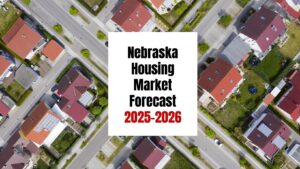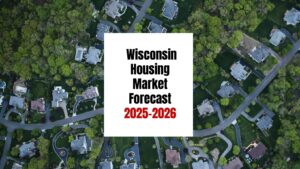The Wyoming housing market in 2024 is showing strong signs of competitiveness, with home prices up 31.0% compared to last year and a median sale price of $275K. This trend suggests that the market remains robust despite potential economic headwinds. However, it's also important to acknowledge that this is a snapshot of the market in September, and conditions can change rapidly.
In this article, I will explore the key trends influencing the Wyoming housing market, delve into home sales, prices, and supply, and provide you with a better understanding of what to expect in the coming months.
Current Wyoming Housing Market Trends 2024
Home Sales
The latest data by Redfin reveals that home sales in Wyoming are brisk. The average time a home spends on the market before going pending is just 22 days, indicating a high demand and low inventory. This is a sign of a competitive market where buyers often need to act quickly to secure a property.
In September 2024, only 3 homes were sold, but it's worth noting that this data may be incomplete or not a representative sample of the entire state. I often find that local MLS data can provide more granular details about sales activity in specific regions and can be more useful for getting a realistic view of sales volume.
It's also crucial to consider that the “average” can be misleading. The real estate market in Wyoming is diverse, with smaller towns and cities experiencing different dynamics compared to larger urban centers. While some areas might experience brisk sales, others might be more balanced, with homes staying on the market a bit longer.
Home Prices
One of the most notable trends in the Wyoming housing market is the significant increase in home prices. As mentioned earlier, the median home price in September 2024 was $275K, which represents a 31% increase compared to the same period last year. This surge in prices is driven by several factors, which I will explore below.
The average price per square foot is $198 (although the data isn't clear whether this is for the same 3 home sales as in the previous section), which gives an idea of the value buyers are placing on housing in the state. While a 31% increase may seem dramatic, I've personally seen even steeper price escalations in certain localized areas due to factors like desirable locations, stunning views, or proximity to outdoor recreation.
Factors Driving Price Increases
- Low Inventory: The number of available homes for sale in Wyoming remains low, creating a supply-demand imbalance that pushes prices upward. This shortage of inventory is a widespread issue across many parts of the country, and Wyoming is no exception.
- Increased Demand: Wyoming continues to attract buyers from out of state. The appeal of wide-open spaces, stunning scenery, and a strong sense of community continues to draw individuals and families seeking a different pace of life.
- Remote Work Trends: The shift to remote work has provided more flexibility for people to relocate to areas like Wyoming. Many individuals now have the option to work from anywhere with a reliable internet connection, making Wyoming a more appealing option.
- Tourism and Recreation: Wyoming's stunning natural beauty and abundance of outdoor recreation opportunities, including skiing, hiking, fishing, and camping, draw visitors and potential residents.
Housing Supply
The housing supply in Wyoming continues to be a significant challenge, playing a pivotal role in the current market conditions.
As I mentioned earlier, the low inventory is one of the primary reasons behind the surging home prices. Limited housing supply means fewer choices for buyers, leading to bidding wars and escalating prices.
There are a few factors contributing to this scarcity:
- Limited New Construction: The pace of new home construction hasn't kept up with the growing demand. While some developments are underway, the construction process can be slow due to various factors, including permitting, labor shortages, and material costs.
- Existing Homes Staying on the Market for Shorter Periods: With high demand and limited inventory, homeowners who decide to sell find that their homes are often snapped up quickly, reducing the overall availability of homes in the market.
- Population Growth: Wyoming's population is growing, further exacerbating the housing shortage. The increased demand from both in-state and out-of-state buyers puts a strain on the available housing stock.
Market Trends
The Wyoming housing market is dynamic and ever-changing, and it's essential to understand the underlying trends that are shaping its future.
Migration Trends:
The data on migration trends reveals some interesting insights.
- Relocation within Wyoming: A significant majority (73%) of Wyoming homebuyers in the recent period searched to stay within the Wyoming metro area. This suggests a strong local market and a desire to remain in the state.
- Inflow from Outside Metros: While the majority of homebuyers intend to stay within the state, there is a noticeable inflow of buyers from outside major metropolitan areas. New York leads the list of cities from which people are moving to Wyoming, followed by St. Louis and Los Angeles. This influx is likely influenced by the factors mentioned earlier, including the desire for a different lifestyle and the rise of remote work.
- Outflow to Other States: While the state experiences an inflow of people from larger metropolitan areas, some Wyoming residents are also moving out. The most popular destinations for Wyoming residents are Washington DC, Salisbury, MD, and Harrisburg, PA. This outflow is likely driven by factors such as job opportunities and a desire to be closer to family and friends.
Overall Trend:
Based on the available data and my personal insights, the Wyoming housing market is expected to remain competitive for the foreseeable future. The low inventory and high demand are likely to continue influencing prices, although the pace of price increases might slow down if interest rates rise or the economy experiences a downturn.
Table Summarizing Key Trends
| Trend | Description | Impact on Housing Market |
|---|---|---|
| Home Prices | Increased 31% year-over-year | Higher purchase costs for buyers |
| Home Sales | Brisk sales with homes selling quickly (22 days) | Competitive environment for buyers |
| Housing Supply | Low inventory due to limited new construction and population growth | Increased competition and upward pressure on prices |
| Migration | Inflow of buyers from large metropolitan areas, particularly New York, St. Louis, and Los Angeles | Increased demand for housing, pushing up prices |
| Interest Rates | Likely to have an impact on affordability | Could slow down price appreciation if rates rise significantly |
The Impact of Interest Rates
Interest rates are a crucial factor that can impact housing affordability. If interest rates continue to rise, the cost of borrowing money to purchase a home will increase, potentially cooling down the market and slowing down the rate of price increases. While rates haven't yet had a dramatic effect on Wyoming, it's something I'm monitoring closely.
Wyoming Housing Market Forecast for the Next 2 Years: 2025-2026
Looking ahead, I expect the Wyoming housing market to remain relatively strong. The state's appeal as a place to live and work is unlikely to diminish, and this continued appeal will continue to create demand for housing. However, it's also important to be realistic. The market is likely to experience some fluctuations, and certain areas might see price corrections or slower growth.
Wyoming Housing Market Forecast by Region
I have analyzed the data from Zillow, a reputable source for real estate information, and created a table summarizing the forecasted changes in home values in different regions of Wyoming.
The Wyoming housing market is expected to experience mixed growth in the coming year. Some areas are expected to see price increases, while others are poised for a decline. The average Wyoming home value is currently $353,250, which is up 3.0% over the past year. Homes typically go pending in around 29 days. Let's take a closer look at the forecast for different regions of Wyoming.
| Region | October 2024 Forecast | December 2024 Forecast | September 2025 Forecast |
|---|---|---|---|
| Cheyenne, WY | 0.2% | -0.5% | -2.3% |
| Casper, WY | 0.2% | -0.1% | 0% |
| Gillette, WY | 1% | 0.8% | 0.1% |
| Rock Springs, WY | 0.6% | 0.3% | -1.3% |
| Riverton, WY | 0.5% | -0.1% | 1% |
| Laramie, WY | 0.6% | 0.4% | 0.8% |
| Jackson, WY | 0% | 0% | 4.1% |
| Sheridan, WY | 0.5% | 0.2% | 0.4% |
| Evanston, WY | 0.8% | 1% | 2.8% |
Regions Poised for Growth
Based on the data, Jackson, Evanston, and Gillette are the regions in Wyoming that are expected to see the highest growth in home prices through September 2025.
- Jackson is projected to have a remarkable 4.1% increase by September 2025.
- Evanston is expected to see a 2.8% increase.
- Gillette is anticipated to see a 0.1% growth.
Regions Poised for Decline
Cheyenne and Rock Springs are the regions expected to see the biggest drops in home prices by September 2025.
- Cheyenne is projected to see a -2.3% decline.
- Rock Springs may experience a -1.3% decline.
Will Home Prices Drop in Wyoming? Will the Market Crash?
While some regions are predicted to experience a decline in home prices, it's important to note that these are just forecasts. A “crash” is typically characterized by a rapid and significant decline in home values, often exceeding 10%. The current forecast does not suggest a crash in the Wyoming housing market. The declines are relatively small and do not indicate a widespread or dramatic downturn.
Possible Wyoming Housing Market Forecast for 2026
Forecasting beyond a year or two becomes increasingly speculative. However, several factors could influence the Wyoming housing market in 2026. These include:
- Interest rates: If interest rates rise significantly, it could dampen demand for housing and lead to price declines.
- Economic conditions: A strong economy and job growth tend to support a healthy housing market.
- Population growth: Wyoming has seen modest population growth in recent years, which could continue to support demand for housing.
- Housing Inventory: A shortage of available homes for sale could put upward pressure on prices, while an oversupply could lead to price declines.
Based on these factors, it's possible that the Wyoming housing market could experience a period of slower growth or even modest declines in some areas in 2026. However, a major crash is unlikely unless there is a significant economic downturn or a major shift in market fundamentals.
Recommended Read:
- Housing Market Forecast for the Next 2 Years: 2024-2026
- Will the Housing Market Crash in 2025?
- Will Housing Be Cheaper if the Market Crashes in 2025?
- Housing Market Predictions for Next Year: Prices to Rise by 4.4%
- Housing Market Predictions for Next 5 Years: 2025 to 2029
- Housing Market Predictions for 2025 if Trump Wins Election
- Housing Market Predictions for the Next 4 Years: 2024 to 2028











